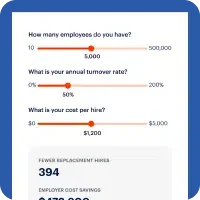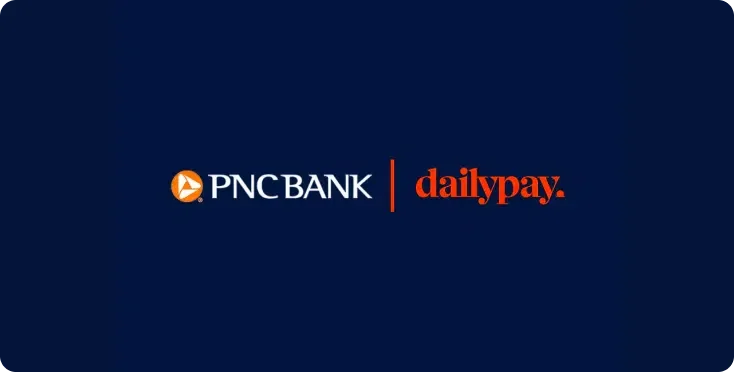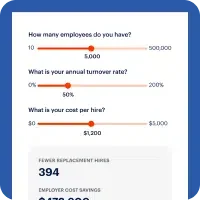In our previous article, we discussed employee retention rates by industry and looked at which industries have the best and worst employee retention rates. In this article, we’ll take a look at the turnover rate across the restaurant industry.
A Look at Turnover in the Restaurant Industry
As of November 2023, the overall turnover rate across the restaurant industry (categorized as accommodation and food services according to the Bureau of Labor Statistics) was 6.1% compared to 4.9% across all industries.1 This turnover rate was among the highest across industries measured during this timespan.
Why Are Restaurants Struggling With High Turnover?
Staffing in the restaurant industry was 3.6% below pre-pandemic levels at the start of 2023, according to the National Restaurant Association.2
Additionally, 62% of operators say they can’t staff up to meet demand, and 80% say they have a hard time filling open positions.3
Restaurants often experience higher turnover rates compared to other businesses with hourly wages and tip distribution due to the demanding nature of the industry. The fast-paced environment, irregular working hours and intense customer interactions can contribute to burnout. Servers may also face variability in income depending on factors like customer traffic and tipping patterns.
Additionally, the reliance on tips introduces financial instability. Limited career growth opportunities within the restaurant sector can further drive turnover, as employees seek stability and advancement. The transient nature of restaurant employment, combined with the physical demands, creates an environment where staff turnover is more prevalent than in businesses with stable hourly wages.
The Cost of High Turnover
The cost of turnover can vary depending on your organization, but the estimated cost for losing an employee is one-half to two times the employee’s salary. The average cost for hourly workers is $1,500 per employee.4
When looking specifically at the restaurant industry, the cost may be even higher with an estimate at $5,864 per person.5
The granular breakdown looks something like this:
- Pre-departure disengagement: $176
- Recruiting to fill position: $1,173
- Selection for new hire: $645
- Orientation and training: $821
- Productivity loss for all staff: $3,049
The costs of these items can be detrimental to the profitability of a thin-margin restaurant. A restaurant can calculate how much the turnover cost using a turnover cost calculator.
How Restaurants Can Address High Turnover With EWA
Among various strategies to enhance retention in the restaurant industry, providing earned wage access stands out as a key initiative.
Earned wage access (EWA) benefits can present a valuable way for restaurants to differentiate themselves in a tight labor market by giving employees more control over when and how they receive their pay. With EWA, employees can access their earned pay before payday with the click of a button.
Given that a substantial portion of restaurant workers’ income stems from tips, one of the key components to the EWA program becomes particularly advantageous.
Luckily, real-time tips access are available through DailyPay Tips. This ensures that employees can promptly access their tipped earnings after each shift, mitigating financial instability associated with tip-dependent wages. Real-time tips access not only address the challenges of income variability but also enhance financial liquidity for restaurant workers, fostering greater satisfaction in an industry where tips play a significant role in overall compensation.
Whether it’s real-time tips access, digital rewards, or giving employees their earned pay before payday, EWA can inspire, motivate and engage employees.
Stand Out From the Competition and Attract Top Talent
EWA gives your employees the financial control they need to be more engaged, motivated and happier at work. According to a November 2022 DailyPay study, 67% of employees say DailyPay helps them reduce their financial stress.6
This increased employee support can help your company stand out in the hiring process, with 96% of employers who offer EWA say it helps them attract talent.7
Keep Employees Happy and Increase Retention
For your restaurant to remain successful, it’s important to keep your best employees and help them build a lasting career. That’s why restaurant industry leaders are already turning to EWA to reduce turnover and grow talent for the future from within their company. In fact, 98% of restaurants offering an EWA solution say it has a positive impact on employee retention.8
Companies that don’t offer EWA may lose talent to their competitors. According to a 2023 Harris Poll survey commissioned by DailyPay, one-third (32%) of Gen Z hourly workers are willing to consider leaving their current employer for one that offers daily access to wages.9
1 https://www.bls.gov/news.release/jolts.t08.htm :DailyPay, 2020
2 https://restaurant.org/research-and-media/research/economists-notebook/analysis-commentary/restaurants-added-jobs-in-24-consecutive-months/ :DailyPay, 2020
3 https://restaurant.org/research-and-media/research/economists-notebook/analysis-commentary/restaurants-added-jobs-in-24-consecutive-months/ :DailyPay, 2020
4 https://builtin.com/recruiting/cost-of-turnover :DailyPay, 2020
5 https://www.notch.financial/blog/restaurant-turnover-rate :DailyPay, 2020
6 November 2022 DailyPay User Survey:DailyPay, 2020
7 March 2022 ADP Earned Wage Access Market Research Study (note: for employers with 1,000+ employees):DailyPay, 2020
8 September 2023 Hanover Research Study: Companies with EWA Solutions, September 2023:DailyPay, 2020
9 Harris Poll survey commissioned by Funding our Future and DailyPay, July 2023:DailyPay, 2020













